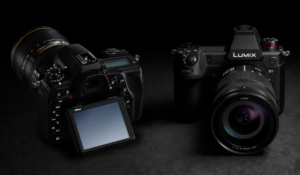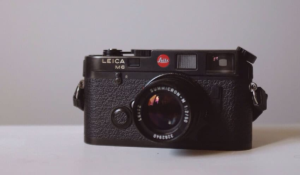The Beginner’s Guide to Tripods: Enhancing Stability and Versatility in Photography

Videography and photography rely heavily on precision and stability. You need a reliable support system for your camera if you want to capture stunning landscapes, shoot close-up details, or film smooth motion sequences. Tripods come into play here. Here’s a beginner’s guide to tripods, covering everything you need to know about them, from their basic functions to choosing the right one.
Tripods: what are they?
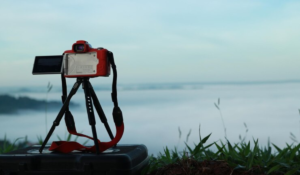
A tripod is a three-legged support system that stabilizes a camera or other imaging device. Three legs are attached to a central hub, where a mounting plate attaches the camera. Various tripod heads offer different degrees of movement and control over the camera’s positioning, and tripod legs can be extended or retracted to adjust the height.
Tripods: Why Do You Need Them?
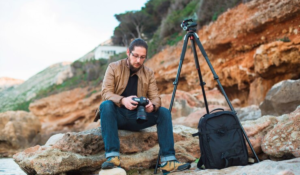
In photography and videography, tripods serve several crucial functions:
-
Using a tripod ensures sharp images, especially when using slower shutter speeds in low light conditions or for long-exposure photography.
-
Suitable for HDR (High Dynamic Range) photography and panoramic stitching: They provide a stable platform for capturing multiple exposures.
-
Support for heavy lenses: Tripods can support heavy lenses, allowing photographers to use telephoto lenses or take long exposures without holding the camera.
-
Photographers can experiment with a variety of techniques, such as long exposures or time-lapses, and use them for self-portraits and group shots where they must be present.
Tripods have the following drawbacks:
However, tripods have some drawbacks as well:
-
Weight and bulk: Tripods add weight and bulk to your gear setup, which makes them less convenient when travelling or shooting outdoors.
-
Depending on the environment, tripods may not be permitted or practical in crowded or restricted spaces.
-
It is important to invest in a reliable tripod to ensure stability and longevity. Beginners may be discouraged by this upfront cost, however.
The Tripod: Setting it up and adjusting it:
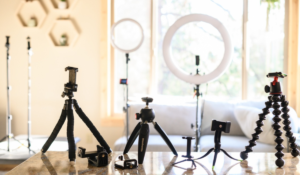
In order to achieve stability and optimal performance from a tripod, it is important to set it up and adjust it properly:
-
In uneven terrain, adjust the tripod’s legs to provide secure footing and place it on stable ground.
-
Consider both the tripod’s maximum and minimum height options when adjusting the height. If you are adjusting the tripod’s height, keep your height and shooting preferences in mind.
-
To maintain smooth operation and longevity, regular cleaning and maintenance should be performed on tripod legs and adjustment mechanisms.
The different types of tripod heads are as follows:
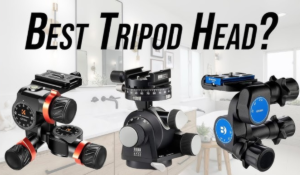
Camera positioning can be controlled and precise with different tripod heads:
-
In order to control the composition of the image accurately, pan/tilt heads are equipped with separate knobs for adjusting the camera’s horizontal and vertical movements.
-
In order to position the camera quickly and intuitively, ball heads offer a single mechanism that allows for free adjustments in any direction.
-
A gimbal head stabilizes the camera around its center of gravity, offering smooth and stable movement, especially when shooting wildlife.
-
There are tripods that come with specialized heads for specific applications, such as panoramic heads for seamless panoramic photography.
Buying a tripod: Things to look for (and avoid):
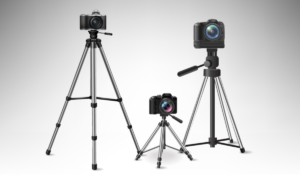
You should consider the following factors when purchasing a tripod:
-
Test the tripod’s load capacity before using it with a camera and lens.
-
Especially if you plan to travel frequently or shoot on location, consider the tripod’s weight.
-
A lightweight carbon fiber or a sturdy aluminum construction balances weight with stability.
-
Ensure that your tripod is stable by choosing one with a robust build and secure leg locks.
-
Depending on your eye level, adjust the tripod’s height to ensure comfortable shooting.
-
Adjustable leg angles and leg locks are essential for quick and secure adjustments, especially on uneven terrain.
-
For precise compositions or quick adjustments, choose a tripod head that fits your shooting style.
-
Camera Quick-Release System: This system allows you to mount and remove your camera quickly, improving workflow efficiency.
-
Folded tripods are easier to transport and store because of their compact size.
-
Check if the tripod is compatible with additional accessories such as extension arms and smartphone mounts.
Depending on the user’s needs:
There is a tripod for every need, regardless of the type of photographer or videographer:
-
For beginners, look for tripods that are easy to use, versatile, and affordable.
-
Photographers on the go: Choose lightweight tripods with quick-setup features for on-the-go photography.
-
You should choose heavy-duty tripods that can be adjusted easily for versatile studio setups.
-
During video recording, tripods with fluid heads are recommended for smooth camera movements.
-
Photographers who work in challenging terrain should prioritize tripods with sturdy legs and spiked feet.
-
In order to capture sharp close-up images, macro photographers should look for tripods with features that enable precise positioning and stability.
-
Time-lapse creators and astronomers: Invest in tripods with excellent stability over long periods and compatibility with specialized heads.
-
For dynamic mobile content creation, choose lightweight and adaptable tripods with remote controls.
-
Professional photographers should opt for tripods with robust materials, advanced features, and precision adjustments.
Conclusion:
It is essential to select the right tripod for photography and videography in order to enhance stability and versatility. You must understand your specific needs and preferences in order to select the best tripod for your workflow, regardless of whether you’re a beginner or an experienced professional. During your decision-making process, keep factors such as load capacity, weight, stability, and compatibility in mind. A quality tripod is an investment in the quality of your images and videos, so take your time to find the right one. Best wishes!

